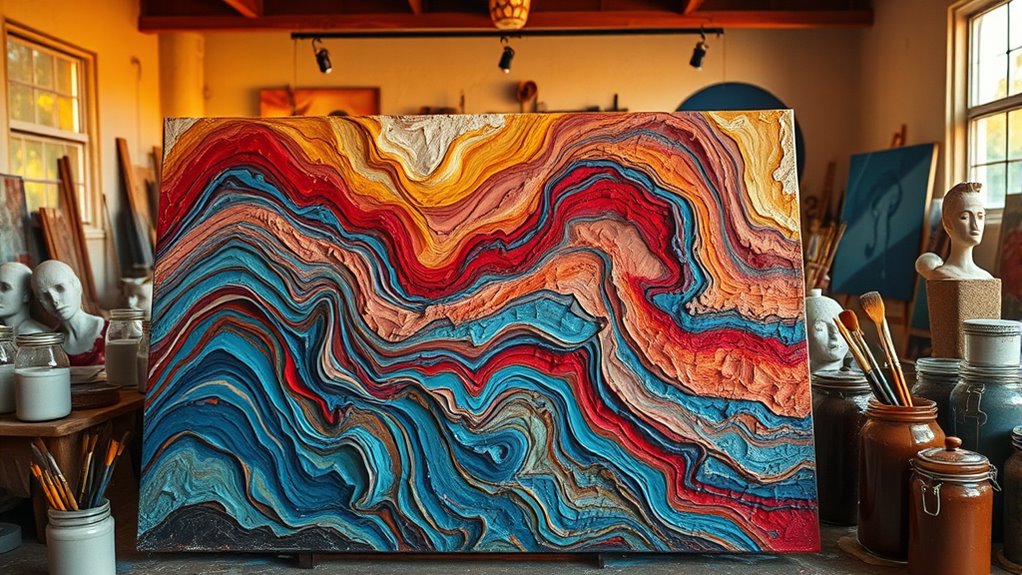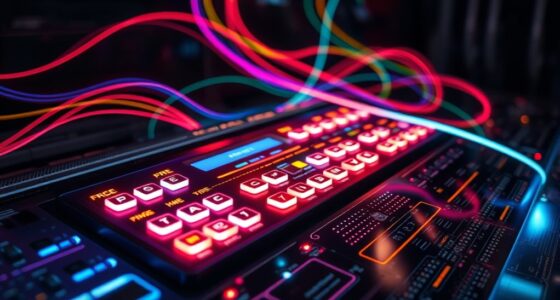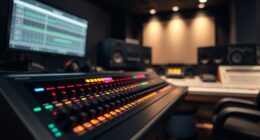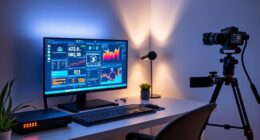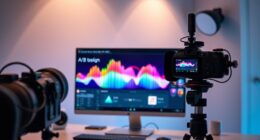To paint with noise and create textured soundscapes, start by understanding how noise is a complex, layered sound with unpredictable frequency variations. Use visualization tools like spectrograms to translate sound data into elegant visual patterns, incorporating color, movement, and textured brushwork. Experiment with mapping sound qualities to visual attributes, emphasizing contrast and rhythm. By blending these techniques, you can craft dynamic, evocative artworks that express sound’s rich textures—continue exploring to unseal your full creative potential.
Key Takeaways
- Analyze sound textures using spectral analysis to identify layered energy across spectral bands.
- Map sound parameters like amplitude, frequency, and rhythm to visual attributes such as color, texture, and movement.
- Use visual tools like spectrograms and layered brushwork to translate complex noise textures into tactile visual patterns.
- Incorporate contrasting textures and dynamic brushstrokes to mimic the ebb and flow of sound waves visually.
- Combine digital and traditional techniques to create layered, engaging artworks that reflect the chaotic beauty of noise.
Understanding the Concept of Noise in Art
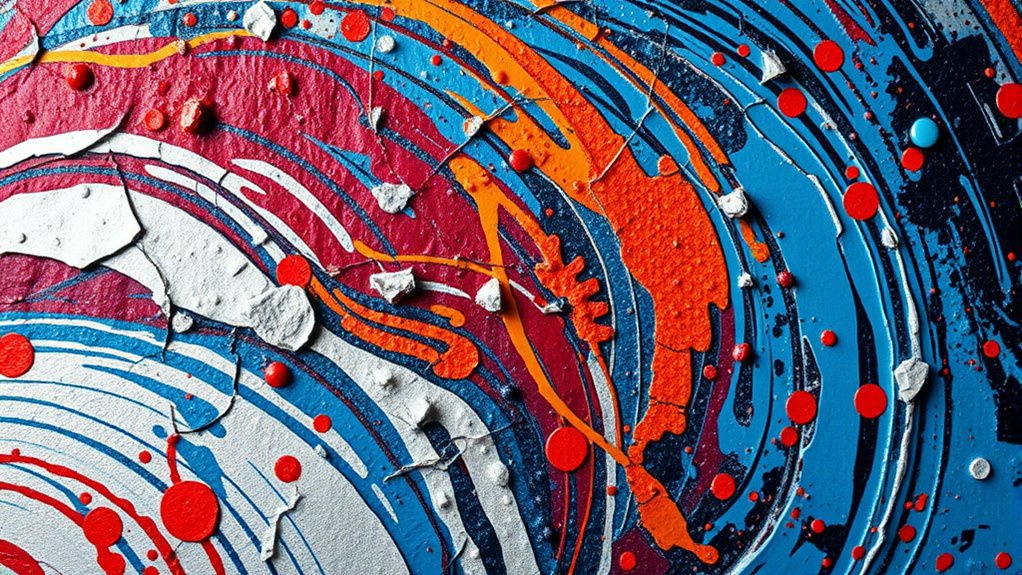
What exactly does “noise” mean in the context of art? It refers to a complex array of sounds characterized by unpredictable variations in frequency modulation. Instead of clear melodies or rhythms, noise presents a textured, chaotic soundscape. Spectral analysis helps us understand this complexity by breaking down sound into its component frequencies, revealing how noise is composed of numerous overlapping signals. This analysis shows that noise isn’t just random; it’s a rich, layered fabric of energy across different spectral bands. Recognizing this allows you to see noise as an artistic element—an abstract, dynamic medium. By understanding its spectral properties, you can manipulate, interpret, and incorporate noise into your creative process, transforming disorder into meaningful, textured soundscapes. Additionally, modern tools such as sound synthesis and digital processing techniques enable artists to craft and refine noise textures with precision, expanding the possibilities for innovative sound design.
Exploring Different Types of Sound and Their Textures
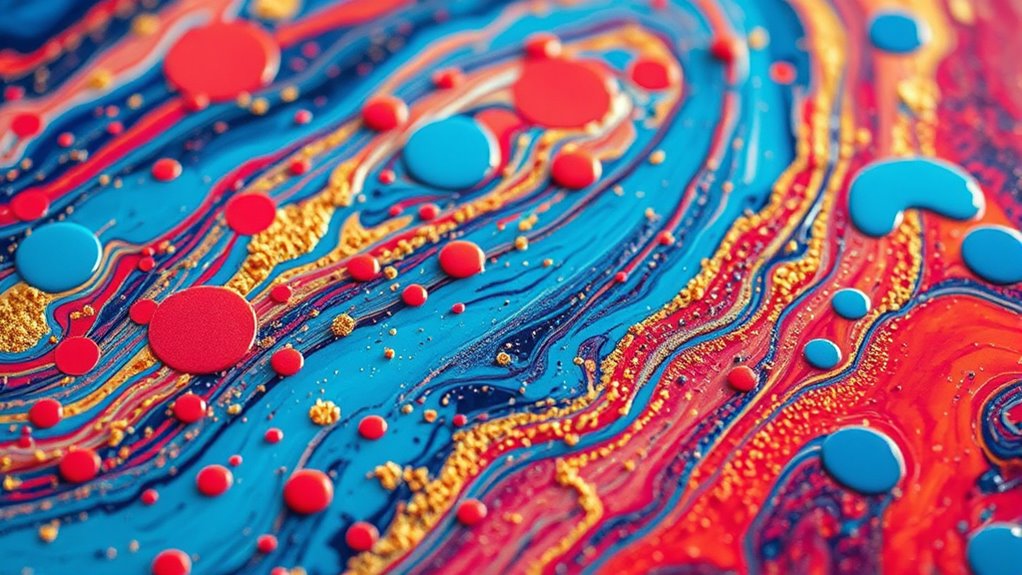
Have you ever noticed how sounds can evoke different textures and feelings? By exploring various sound types, you can better understand their unique textures. Frequency modulation shapes the character of a sound, creating vibrato or tremolo effects that add richness or tension. Spectral analysis reveals how sound energy distributes across frequencies, highlighting whether a sound is bright, dull, harsh, or smooth. For example, low-frequency noises like rumbling bass feel deep and resonant, while high-frequency sounds like squeaks are sharp and crisp. Recognizing these differences helps you craft more expressive soundscapes, whether you’re blending ambient noises or emphasizing specific textures. Understanding how frequency modulation and spectral analysis influence sound textures allows you to paint dynamic, textured auditory landscapes with greater precision. Audio analysis techniques enable sound designers to dissect and manipulate these textures more effectively.
Tools and Techniques for Visualizing Soundscapes
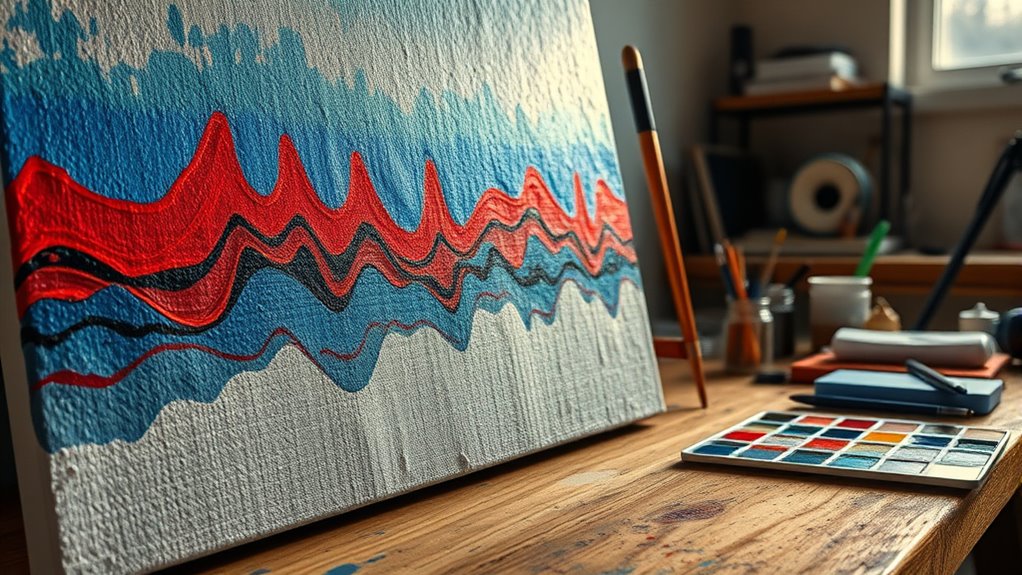
To effectively analyze soundscapes, you need the right tools and techniques that translate complex audio into visual representations. Start with proper sensor calibration to ensure accurate readings, which is essential for reliable visualization. Precise calibration aligns your sensors with the environment, reducing noise and distortion. Next, focus on audio sampling—selecting the right sampling rate and resolution—to capture the nuances of sound textures. High-quality audio sampling preserves the richness of soundscapes, allowing detailed analysis. Use spectrograms or waveforms to visualize the data, highlighting patterns and textures that might be invisible to the naked ear. Additionally, understanding the importance of indoor air quality can help in creating a controlled environment for sound analysis, minimizing external pollutants that could affect sensor readings. Combining these tools and techniques empowers you to transform raw sound into meaningful visual art, revealing the hidden layers and complexity of noise-based soundscapes.
Creating a Digital Canvas for Noise-Based Art
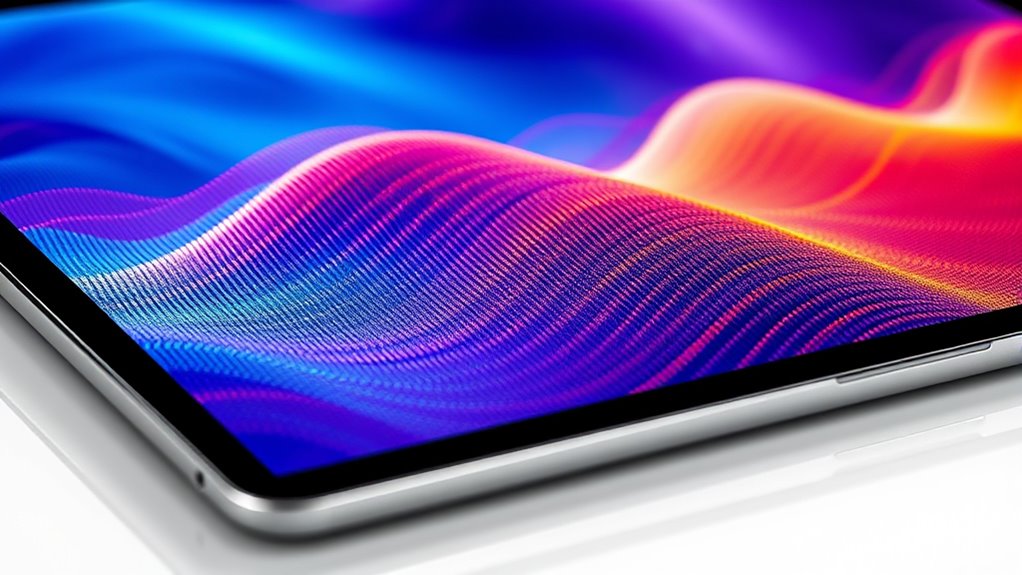
Creating a digital canvas for noise-based art involves selecting the right software and hardware to transform sound data into compelling visual expressions. You’ll want tools that support digital layering, allowing you to build complex textures by stacking various sound-driven visuals. Algorithmic rendering plays an essential role, as it automates the translation of sound frequencies and amplitudes into dynamic visual patterns. Choose software that offers customizable parameters for real-time manipulation, giving you control over how noise influences the artwork’s appearance. Hardware like graphics tablets or high-performance computers ensures smooth rendering and precise adjustments. By combining effective software features with your hardware setup, you set a solid foundation to craft intricate, noise-inspired visuals that respond fluidly to sound inputs.
Translating Sound Data Into Visual Textures
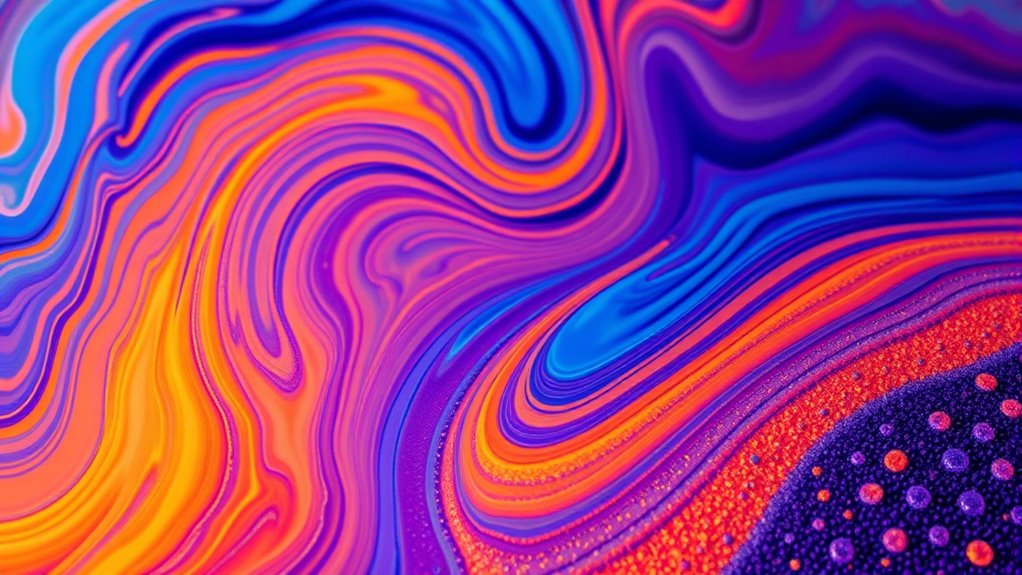
Once you’ve chosen your software and hardware setup, the next step is to translate sound data into visual textures that resonate with your artistic vision. This process relies on algorithmic translation, where sound parameters like amplitude, frequency, and rhythm are converted into visual elements such as patterns, lines, and shapes. Sensory mapping plays a vital role, assigning specific sound qualities to visual attributes—for example, high-pitched sounds might create fine, intricate textures, while bass frequencies generate broad, coarse strokes. By fine-tuning these mappings, you control how sound influences your visuals, ensuring the textures effectively evoke the intended mood or atmosphere. Additionally, understanding home improvement principles can inspire innovative ways to organize your workspace for creative projects, making the process more efficient and enjoyable. This step transforms raw audio data into a compelling visual language, bridging auditory and visual experiences seamlessly.
Incorporating Color and Movement Into Sound-Inspired Artwork
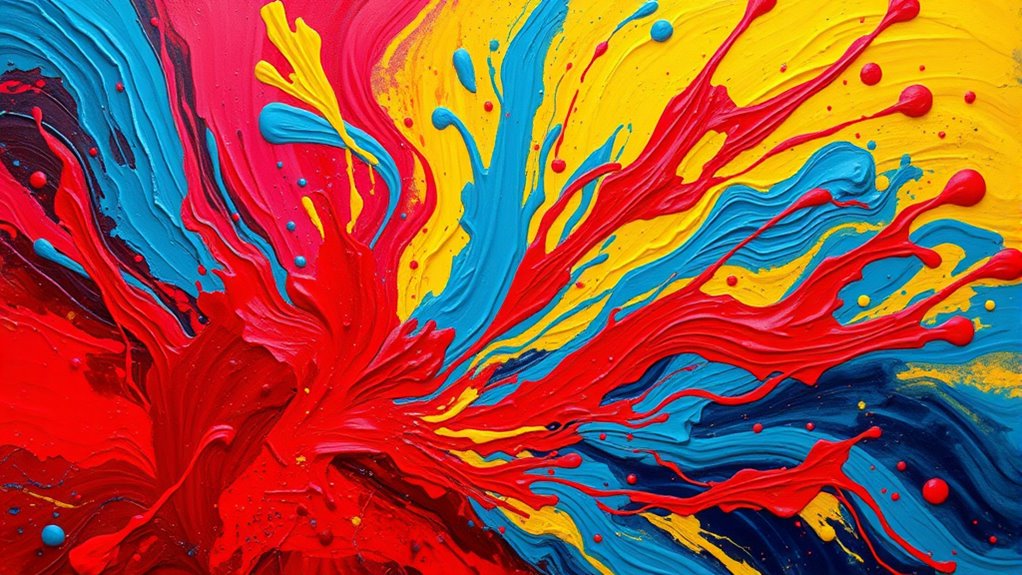
You can bring sound-inspired art to life by blending colors dynamically to reflect different tones and moods. Using rhythmic brushstrokes helps evoke movement that mirrors musical or noise patterns. Pay attention to texture through your brushwork to add depth and tactile energy to your visual composition. Incorporating rustic lighting can further enhance the ambiance by casting warm, inviting shadows that complement the textured soundscape.
Dynamic Color Blending
Dynamic color blending brings movement and emotion into sound-inspired artwork by seamlessly merging hues to reflect varying intensities and rhythms. You can achieve this by carefully selecting colors that complement each other, maintaining color harmony while emphasizing shifts in tone. As you blend, focus on how progressions between colors mirror the fluctuations in sound, creating a visual rhythm. This technique enhances emotional resonance, allowing viewers to feel the music’s energy through vivid, fluid progressions. By manipulating color gradients and blending techniques, you evoke a sense of motion that parallels auditory dynamics. The goal is to let colors flow naturally, capturing the essence of the soundscape, and making your artwork resonate on a visceral level with your audience.
Evoking Rhythmic Movement
To evoke rhythmic movement in your sound-inspired artwork, focus on how colors and shapes can mirror the pulsations and tempo of the music. Use bold, repeating patterns to suggest rhythmic patterns that visually pulse across your canvas. Incorporate varying movement dynamics by adjusting the size, intensity, and flow of shapes, creating a sense of energy ebbing and flowing. Sharp lines and jagged forms can evoke rapid, staccato beats, while smooth, flowing curves reflect gentle, sustained rhythms. Play with contrast and spacing to emphasize shifts in tempo, making the viewer almost feel the pulse. By carefully aligning your use of color, shape, and composition, you’ll craft a visual rhythm that captures the essence of the sound’s movement and energy. Additionally, understanding how to manipulate visual texture can enhance the tactile impression of the rhythm, making the artwork more engaging and dynamic.
Texture Through Brushwork
Building on the idea of visual rhythm, incorporating varied brushwork introduces a tactile dimension that enhances the sense of movement and energy in your artwork. Use brushstroke layering to build depth, blending thick, textured strokes with smoother areas. This technique creates contrasting textures that evoke the dynamic qualities of sound, adding richness to your piece. Focus on texture contrast by combining rough, energetic marks with softer, more fluid lines, mimicking the ebb and flow of noise. Experiment with different brush sizes and pressure to vary your strokes, emphasizing certain areas and guiding the viewer’s eye through the composition. By thoughtfully applying these techniques, you transform color and movement into a compelling, textured soundscape that invites tactile engagement. Incorporating **texture contrast** not only enhances visual interest but also mimics the natural variation found in sound waves, enriching the overall sensory experience for the viewer.
Showcasing and Interpreting Your Noise Paintings

Showcasing and interpreting your noise paintings invites viewers to engage deeply with your work, uncovering the emotional and sensory impressions embedded within chaotic textures and sounds. By presenting your work thoughtfully, you allow your audience to explore their own interpretations, connecting with the emotional resonance you’ve woven into the noise. Encourage viewers to embrace the ambiguity and complexity, fostering personal meaning from the layered textures. Providing context or artist statements can guide audience interpretation without limiting it, inviting diverse emotional responses. Focus on creating a dialogue between your work and viewers, helping them see the expressive potential of noise. Ultimately, your goal is to evoke a visceral experience that sparks curiosity and emotional connection through the dynamic interplay of sound and texture. Understanding pop culture trends can also inspire innovative approaches to your noise art, making your work more relatable and impactful.
Frequently Asked Questions
How Can I Effectively Combine Multiple Noise Textures in My Artwork?
To effectively combine multiple noise textures, start by experimenting with layer blending modes to see how different textures interact. Use texture layering to build depth, balancing subtle and bold noises. Vary opacity and blending settings to create harmony, ensuring no single texture dominates. This approach helps you craft rich, dynamic soundscapes in your artwork, giving a compelling sense of depth and complexity through thoughtful layer blending and texture layering.
What Are the Best Software Options for Creating Noise-Based Soundscapes Visually?
You should explore software like Ableton Live, which excels at audio layering and spectral synthesis, letting you craft intricate noise-based soundscapes visually. Adobe After Effects with its audio spectrum effects can also help you visualize and manipulate noise textures creatively. These tools let you blend multiple layers, tweak spectral details, and turn complex noise textures into immersive visual soundscapes effortlessly.
How Do I Balance Chaos and Harmony in Noise-Inspired Paintings?
Imagine gently tuning your artistic ear to find a subtle chaotic balance within your noise-inspired paintings. You’re aiming for visual harmony, where energetic chaos complements serene elements. Use contrasting textures, colors, or shapes to create this delicate equilibrium. Focus on guiding the viewer’s eye smoothly across the piece, blending chaos seamlessly into harmony. With patience and observation, you’ll craft an enthralling work that celebrates both the wild and the peaceful aspects of noise.
Can Noise Art Be Integrated Into Interactive or Immersive Installations?
You can definitely integrate noise art into interactive or immersive installations by leveraging auditory illusions and sensory integration. Use layered soundscapes that respond to visitor movements, creating a dynamic experience. Incorporate spatial audio to enhance immersion and challenge perceptions. By blending visual elements with textured sound, you’ll craft a multisensory environment that invites engagement and exploration, making noise art a powerful tool for interactive installations.
What Are Common Mistakes Beginners Make When Visualizing Sound Textures?
When visualizing sound textures, you might overgeneralize patterns, thinking all noise is chaotic or random. This can lead you to neglect depth, missing subtle layers that add richness to your artwork. Instead, focus on the intricate variations within sounds and how they interact. Use contrasting textures to create a dynamic visual experience, and avoid simplifying everything into uniform shapes. Embrace complexity to truly capture the essence of noise.
Conclusion
Your noise-inspired art becomes a window to unseen worlds, where chaos transforms into a vibrant tapestry of textures and colors. Like a symphony painted onto your canvas, each sound wave whispers its story, inviting viewers to explore hidden depths. Embrace the unpredictable, letting noise be your guide. In this dance of chaos and creation, your artwork becomes a lighthouse—illuminating the beauty within disorder and inviting others to listen with their eyes.

